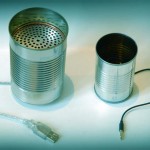
It’s a few years now since I’ve spent any time at sea. Over that time, knowing that one day I’d be back out there, I’ve been following a great advance in collision avoidance systems for ships. Having spent many nights out on the ocean, any advance in technology that can assist the sleep-deprived in keeping the boat and its passengers safe gets my attention. One particularly challenging aspect of night watch is identifying ships from their lights and trying to work out whether they are likely to crash into you. In some situations, minutes of uncertainty can result in hair-raising, adrenaline-rushed moments of panic. This is where AIS comes to the rescue!
 The “Automatic Identification System” became mandatory for larger ships at the end of 2004. This means that all large ships and many smaller ones now periodically broadcast specific details, such as ship’s name, position, course, speed and other more technical information. AIS uses a “local-area” VHF radio system (the VHF band includes FM radio, so the distances it works over are similar, approximately 150km or less) and consequently only picks up only the nearby ships. Modern equipment gathers this information to determine if any nearby ships are on a collision course. Obviously quite useful to know!
The “Automatic Identification System” became mandatory for larger ships at the end of 2004. This means that all large ships and many smaller ones now periodically broadcast specific details, such as ship’s name, position, course, speed and other more technical information. AIS uses a “local-area” VHF radio system (the VHF band includes FM radio, so the distances it works over are similar, approximately 150km or less) and consequently only picks up only the nearby ships. Modern equipment gathers this information to determine if any nearby ships are on a collision course. Obviously quite useful to know!
After spending a few years at sea before AIS was introduced, it was clear that radar and binoculars are almost inadequate to determine a collision course with enough advance notice (plenty of scary stories from friends!). Some freighters travel at 50 km/hr, so it becomes a stressful race to identify a ship (especially at night), then determine its relative course from movement alone. This has to be done with enough spare time to maneuver out of the way, if a collision is likely. Usually there is enough uncertainty about the other ship’s actual course that knowing how to get out of the way isn’t obvious until it’s almost too late.
Every voyaging ship is required to have a VHF radio tuned to a specific hailing channel, so many sailors will try to hail approaching ships to determine the course and danger, but in my experience, without the ship’s name, radio contact is relatively unlikely.
Working together with AIS, another new technology can significantly reduce the night watch-keeper’s stress: DSC (Digital Selective Calling).

Instead of having to pick up the microphone to call a boat, DSC allows you to hail another boat “digitally”, sort of like the way the dial telephone system replaced the party-line of a few generations ago. DSC combines well with AIS: the AIS data includes the DSC hailing ID (phone number) so the radios can quickly establish a voice channel (like speed dialling on a phone) to negotiate a potentially tricky situation. An AIS/DSC equipped VHF radio will alert sailors to a collision possibility, and with the push of a button, a direct voice channel can be established very quickly (like a phone’s speed-dial). Although normally, with the AIS alert, there’s usually plenty of time to move out of the way, so the direct voice channel is rarely necessary.
Digital Selective Calling has a few more nifty features, too. There is a distress button inside a protective cover on the front panel – when pressed, it will send out a distress alert, setting off alarms on all nearby ships equipped with DSC. If the radio sending the distress signal is connected to a GPS (global positioning systems) receiver, then every other ship will also have the distressed ship’s location and can coordinate assistance or rescue.
The “buddy boat” feature allows DSC radios to communicate within a small group (3-10 boats) and periodically (and privately) exchange AIS-type data so the members of the group can keep track of each other. While that might seem to be just a gimmicky, fun feature, it can be a sensible safety feature as well. It would have been useful, for example, when a group of us were sailing in convoy off the Pacific coast of Mexico. A solo-sailor friend, on a 43 foot boat, knocked his head on the spinnaker pole while gybing and missed our next anchorage because he was unconscious, hanging by the lifelines. He recovered, self-rescued and turned the boat around, but it took him the rest of the day to sail back to our anchorage – for about 8 hours we had no idea what happened to him or where he was.

All these new and exciting features help to make ocean sailing much safer and less likely to result in traumatic or stressful situations. Unlike the old-salts who mourn the advent of GPS-based navigation, I’m quite happy that these modern technologies can make exploring the world by boat so much safer and easier.
NOTE: If you have a spare few minutes and want to see AIS in action, check out the live reports from ships here. It’s pretty cool!
And UPDATE: My new radio (see my previous post) has arrived and is waiting for me to pick it up! Phew!

One thought on “AIS, DSC, VHF, oh my!”